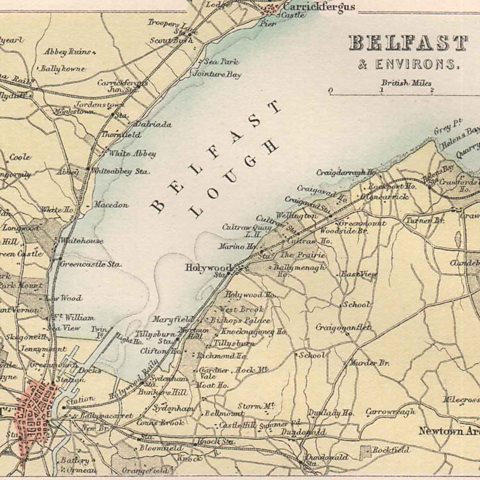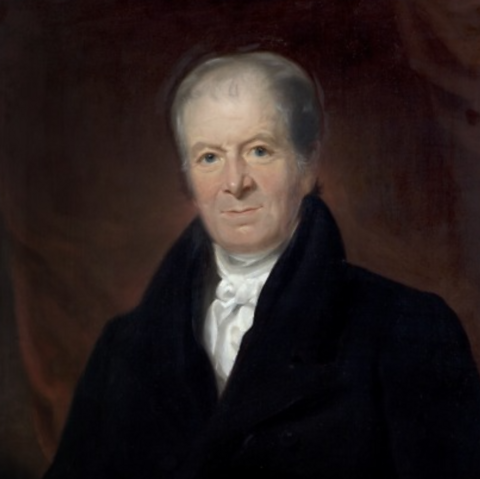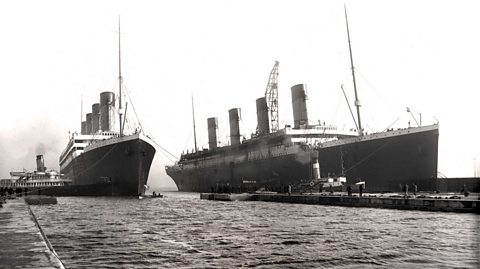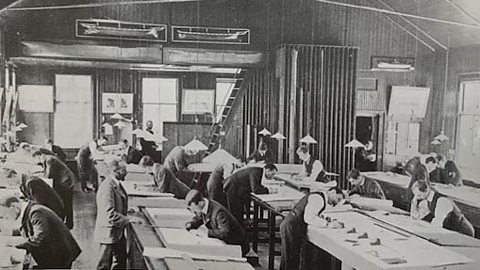Belfast and boats

Geographically, Belfast has a natural harbour so it is probably no surprise that it has had a long association with shipping.
There are historic records of small boats being built in Belfast as long ago as 1636.
At that time it was populated by approximately 2,500 people and only a small amount of ships were built as most of the materials had to be imported - additionally Belfast lacked the skilled tradesmen to build and repair them.

Who was ther father of Belfast shipbuilding?

Scotsman William Ritchie came to Belfast from Saltcoats in March 1791.
Ritchie had already managed a shipyard in Scotland and brought ten skilled workers with him to Belfast.
The ships of the time were still wooden and needed almost constant maintenance.
His clever idea, was to bring joiners and blacksmiths from Scotland, meaning that any repairs could be carried out in Belfast, without the ships having to go to Liverpool or Glasgow.
The first ship produced by Ritchie was the Hibernia, which sailed for New York in July 1792.
Importantly, Ritchie also cooperated with the Ballast Board, a commission that was charged with improving the port, to reclaim land and to make Ritchieâs Dock, which was completed in 1800.

Watch: Facts about Belfast's shipyards
Max Heartrate discusses Belfast's shipyards
DIRECTOR: Standby on the floor.
DIRECTOR: Coming to you camera 2.
DIRECTOR: Cue on 2.
DIRECTOR: Mix-through.
MAX: No time for that! Iâm Max Heartrate and this is Knowledge Express. Information faster than a flea on a fire engine. And todayâs topic isâŠ.
MAX: Belfastâs shipyards! Yes, we may not many ships anymore, but the shipyards are as much a part of Belfast as red brick, pastie suppers and the Albert Clock.
MAX: It's 1792 and Scotsman William Ritchie builds âHiberniaâ, Belfastâs first ever big ship.70 years later two business big shots - Edward Harland and Gustav Wolff, I like both his name and his style! Get together to make Atlantic-crossing ocean liners, including the biggest of them all, the Titanic. Soon they dominate ship building and the names Harland and Wolff are famous across the world.
MAX: In 1939 War breaks out, so now Harland & Wolff make warships â 140 of them in fact, plus 123 merchant ships. Kapow!
MAX: 350,000 people employed and Belfast is still at the top of the premier league of ship building. But here comes trouble.
MAX: The war ends, people begin to fly across the Atlantic and Japanese shipbuilders start supplying the world with much cheaper boats.
MAX: Oops!
MAX: In a last-ditch attempt to avoid relegation we buy two enormous cranes from Germany to show the world that we can still do it.
MAX: But we couldnât. Arghhh!
MAX: But there is some chat about shipbuilding coming back to Belfast which is amazing! And we do love our cranes. Samson and Goliath, donât know which is which, I love yellow though, itâs a statement âso it is!â
The Harbour Commission
The work of the Ballast Board, which was renamed the Belfast Harbour Commission in 1847, was essential in the transformation of Belfast.
Large parts of the channel into the harbour were shallow and the route had many bends.
In fact, the harbour was so unsuitable that many commercial boats had to unload a proportion of their cargo further up the river at Garmoyle Street in the Belfast Docks area.
The Ballast Board sought to change this by excavating a new channel and work began on this in 1839. There were many delays along the way, but this new channel was opened in 1849.
The Victoria Channel and Queen's Island

This new, straighter, deeper Victoria Channel would allow the amount of shipping using the port to grow by 400% in the second half of the 19th century, paving the way for Belfast to become one of the major ports in the British Isles alongside London and Liverpool.
Overseen by the engineer William Dargan, the digging of the channel was a remarkable feat of engineering.
The soil and clay was set aside on the County Down side of the River Lagan, forming an artificial piece of land named Darganâs island after its creator and later renamed Queenâs Island after Queen Victoria.
The growth in shipping could not have happened without the engineering support that firms in the city provided.
In turn, companies such as Sirocco Works and the Belfast Rope Works benefitted from the enormous expansion in shipping.
It is estimated that at one stage Belfast accounted for 10% of the merchant shipping in Britain.

Harland and Wolff
It was on this artificial island that the famous Harland and Wolff (H&W) shipyard would emerge to become the âshipbuilders to the worldâ.
The yard on Queenâs Island was originally started by Robert Hickson in 1853, but he ran into financial difficulties and in 1858 he offered to sell the business to his young yard manager Edward Harland.
Harland needed financial backing and was put in touch with Gustav Wolff from Hamburg who agreed to take a share in the business and the famous partnership was born.
Key points about Harland and Wolff
- Steam ships had been constructed in Belfast since 1820, but Harland and Wolff would specialise in iron shipbuilding. This required skilled workers and they earned much more than those employed in Belfastâs linen industry.
- In 1862 Harland and Wolff employed 450 men but by 1911 they had an incredible 14,000 workers, bringing prosperity to the families that settled in the terraced rows of housing in East Belfast.
- There were almost 1000 ships designed in the drawing rooms of Harland and Wolff but their most important contract was for the White Star Line company, owned by Bruce Ismay, who wanted to dominate Trans-Atlantic travel.
- The White Star Line commissioned Harland and Wolff to build huge ocean liners, beginning with the Oceanic in 1869.
- Four decades later White Star Line ordered three Olympic Class passenger liners, the most luxurious the world had ever seen, the Britannic, the Olympic and the ill-fated Titanic.

Was Harland and Wolff the only shipbuilding company in Belfast?
Harland and Wolf were not the only significant shipbuilders in Belfast. Frank Workman had worked in the large shipyard but in 1880, along with a Scotsman called George Clark, he formed Workman and Clark.
It was known as the wee yard in comparison to Harland and Wolff, but this nickname underestimates its significance. Workman and Clark employed over 9,000 men making it at one time, the fourth largest shipyard in Britain.

Wider problems
The shipbuilding industry brought remarkable change and prosperity to Belfast but it was not immune to the problems that troubled both Ireland and the wider world.
A lot of the trade in the early part of the 19th century was connected to the West Indies whose lucrative plantations exploited the misery of human slavery.
After World War One the appetite for shipping began to decrease. Apart from a brief period of recovery during World War Two, the shipyards would start to go into irreversible decline.
Workman and Clark closed its gates in 1935.
In the second half of the 20th century Harland and Wolf would begin to lose money and would need extensive government help.
Belfast Harbour in the 21st Century
The harbour and docks area of Belfast, that was once the beating heart of the city's industry has been repurposed and reimagined and today houses businesses as diverse as the creative industries, education, tourism and entertainment.
Despite launching its last major ship in 2003, Harland and Wolff has recently obtained three new orders.
The story of Belfast Harbour continues.

Activity: Put the events in order
More on Northern Ireland in the early 20th Century
Find out more by working through a topic